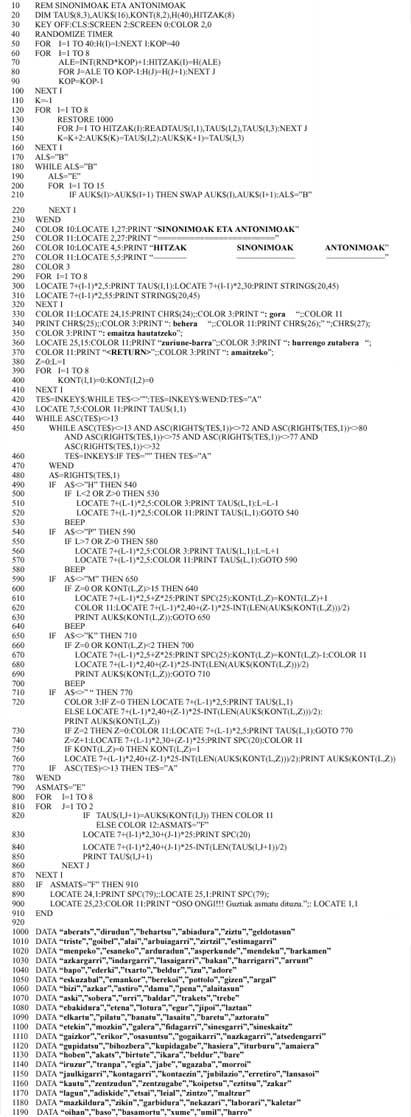Synonyms and antonyms
While computing itself, or at least for some, is aimed at people of science, that should not be entirely true. It is true that it is more difficult for the unscientific to start programming. But, on the other hand, it is true that the field of computing is not limited to the world of programmers, but also users have a fundamental importance.
You will have already noticed that in this section are written articles aimed at readers, programmers or interested in knowing better the tricks of the Basic language. That is our intention.
To carry out this idea, in this magazine we have worked on different themes and games that, offering something concrete, we consider that things are better learned.
Let's start with this introduction by realizing what we present in this issue. The last articles were of a mathematical nature, specifically a game of memorization of numbers and programs on fractions. In this issue, as the title indicates, we will offer a program of SYNONYMS and ANTONYMS, a language program. But before giving way to the program, let's remember what the meanings of these concepts are.
SYNONYM
Synonyms are words with the same meaning, or similar, and with different forms.
The words bapo and genial are synonymous, for example.
OPPOSITE
Opposite is called against a word.
The words enter and exit are, for example, opposite each other.

Program description:
- 20-100: 8 different random numbers are selected from 1 to 40 and the WORDS are saved in the table.
- 110-160: Words corresponding to randomly extracted numbers (trios) are read and synonyms and antonyms are saved in the AUK$ table.
- 170-230: The values in the AUK$ table are sorted in increasing alphabetical order.
- 240-370: Presentation of the selected words and explanation of the available keys: ?, keys: to select one of the 16 possible values, Ø keys: spacebar from one trio to another: RETURN: to finish the program
- 380-780: Control of the keystrokes. Only motion keys are supported and the process ends by pressing RETURN. When you press a key that has no ASCII code, the motion key, for example, returns a string of two characters. The first character of this string is null with code ASCII 0 so it uses precisely the function RIGHT$ to take only the second character of the string. On
the other hand, the options that are made are stored in CONT(L,Z) where L indicates the line and Z the column. The values to be stored in this table will be numbers 1 to 16. - 790-910: This part confirms the options made by the user, showing the successes in blue and the failed in red.
- 1000-1190: Data used in the program. This data may vary depending on the user's will. Although in this case 40
triples have been taken, they may be more or less, yes, in lines 20 and 50 we would have to change the number 40 for which it corresponds.





